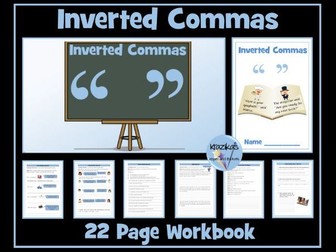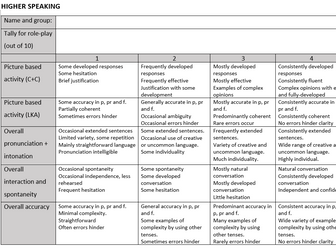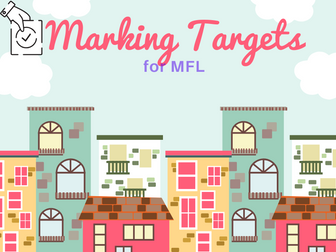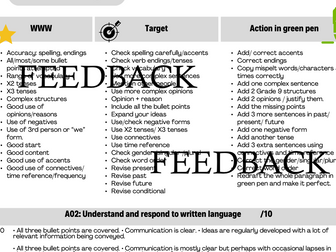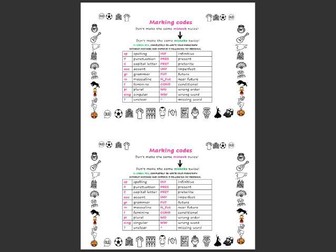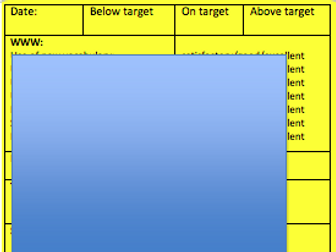
Inverted Commas (Speech Marks)
This resource contains a 22 page workbook on inverted commas (speech marks/quotation marks/direct speech). It is appropriate for pupils in Years 3, 4 and 5 and older, SEN pupils who have yet to master the basics in punctuation. The workbook contains five information/revision sheets, seventeen worksheets and an answer booklet.
Tasks include:
using inverted commas to enclose direct speech
punctuating reporting clauses and direct speech
punctuating split speech
setting out direct speech in dialogue
using alternative words to ‘said’ in reporting clauses
composing writing containing direct speech
If you buy this resource and are pleased with your purchase, I would be extremely grateful if you could leave a review. As a token of appreciation, you can have a free resource of your choice up to the same value as your purchased resource. Just email inspireandeducate@aol.co.uk with your user name, the resource you have reviewed and the resource you would like for free.
You may also be interested in:
Inverted Commas 75 Slide Powerpoint Lesson
This resource contains an editable, 75-slide Powerpoint lesson on inverted commas.The PowerPoint demonstrates how to:
use inverted commas to enclose direct speech
punctuate reporting clauses and direct speech
punctuate split speech
set out direct speech in writing
use interesting words to replace ‘said’
Many opportunities are provided within the PowerPoint for pupils to punctuate direct speech.
Save money and buy both resources in a bundle at a discounted rate:
Inverted Commas - PowerPoint Lesson and Workbook
More English Resources
